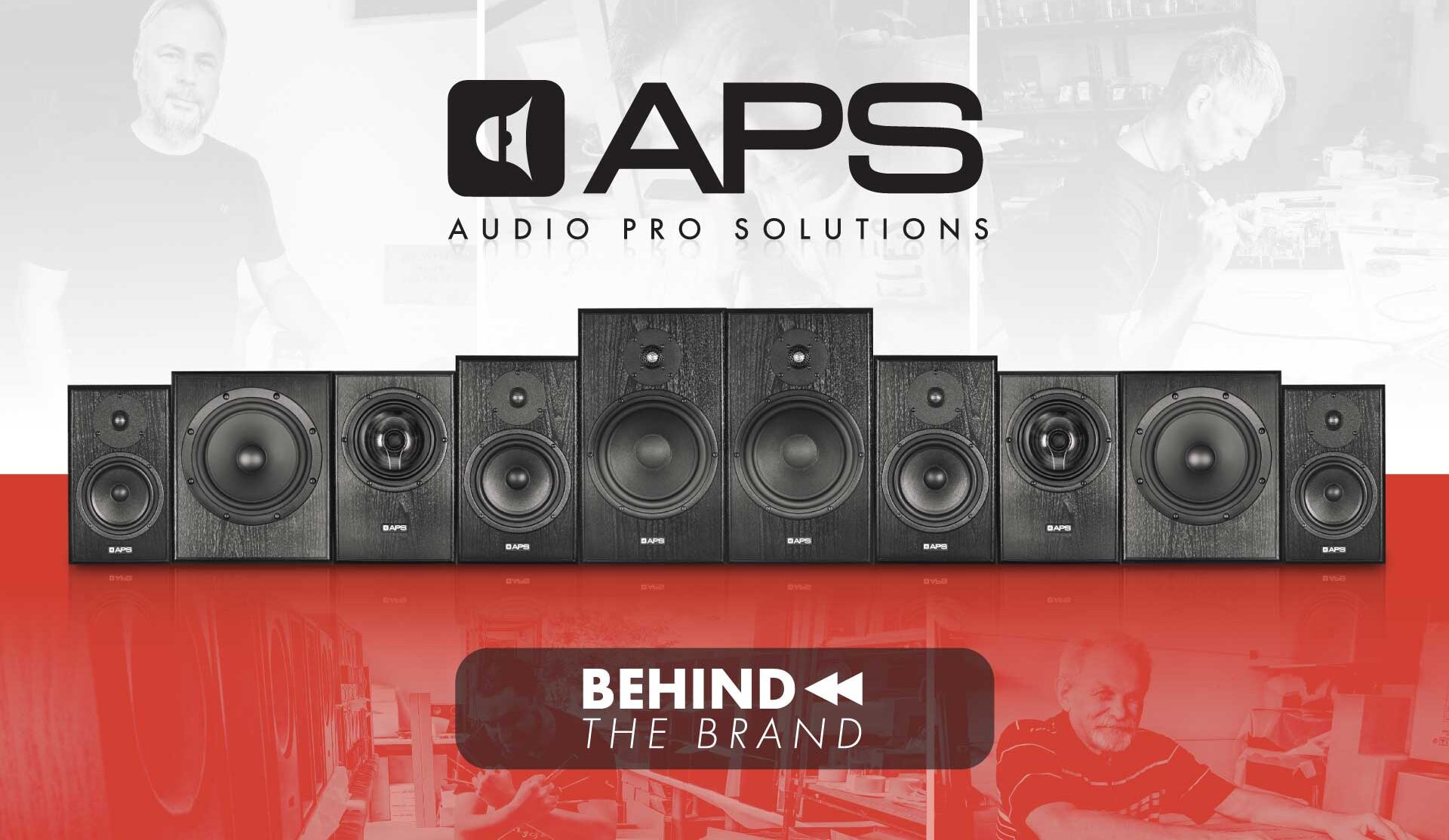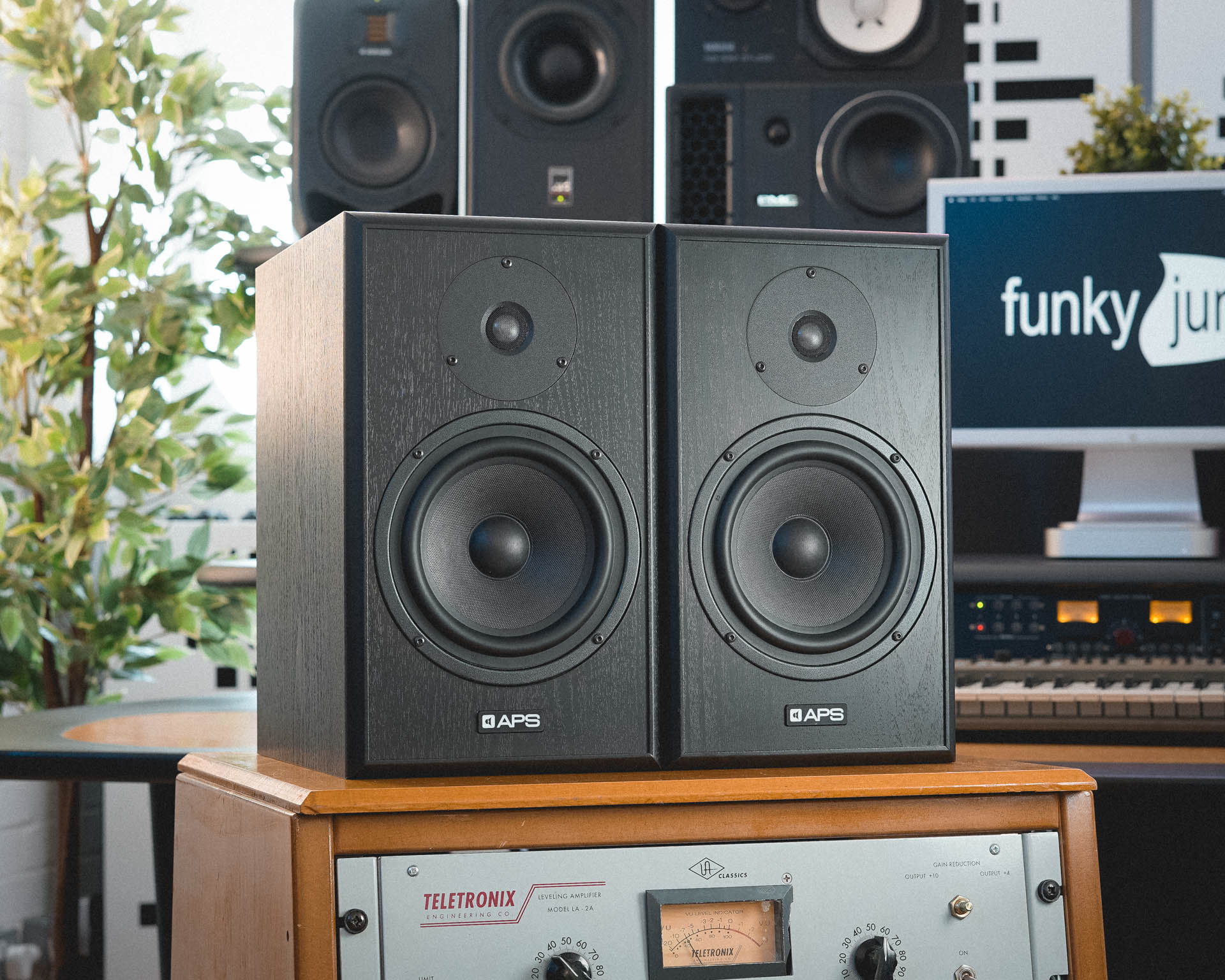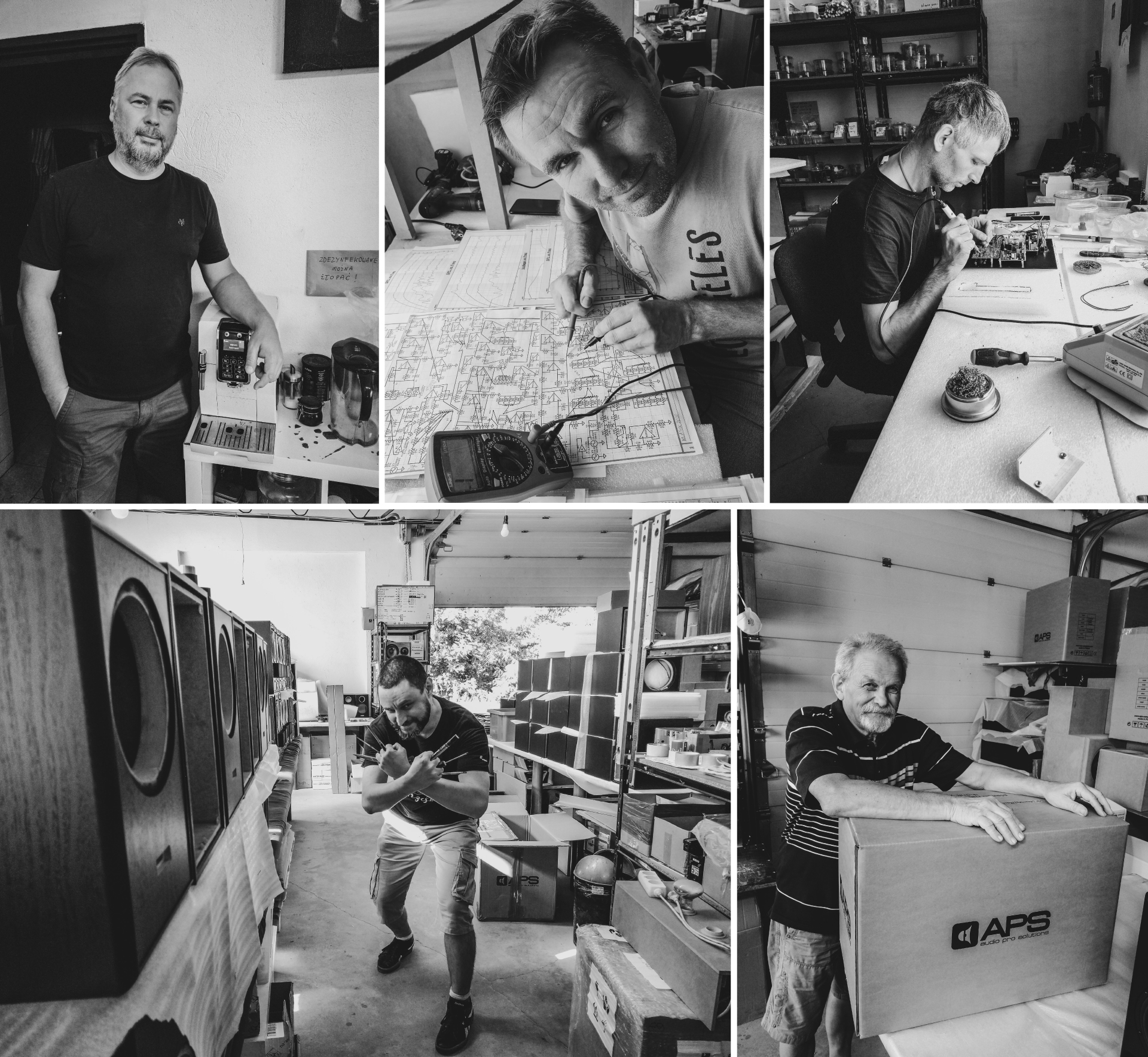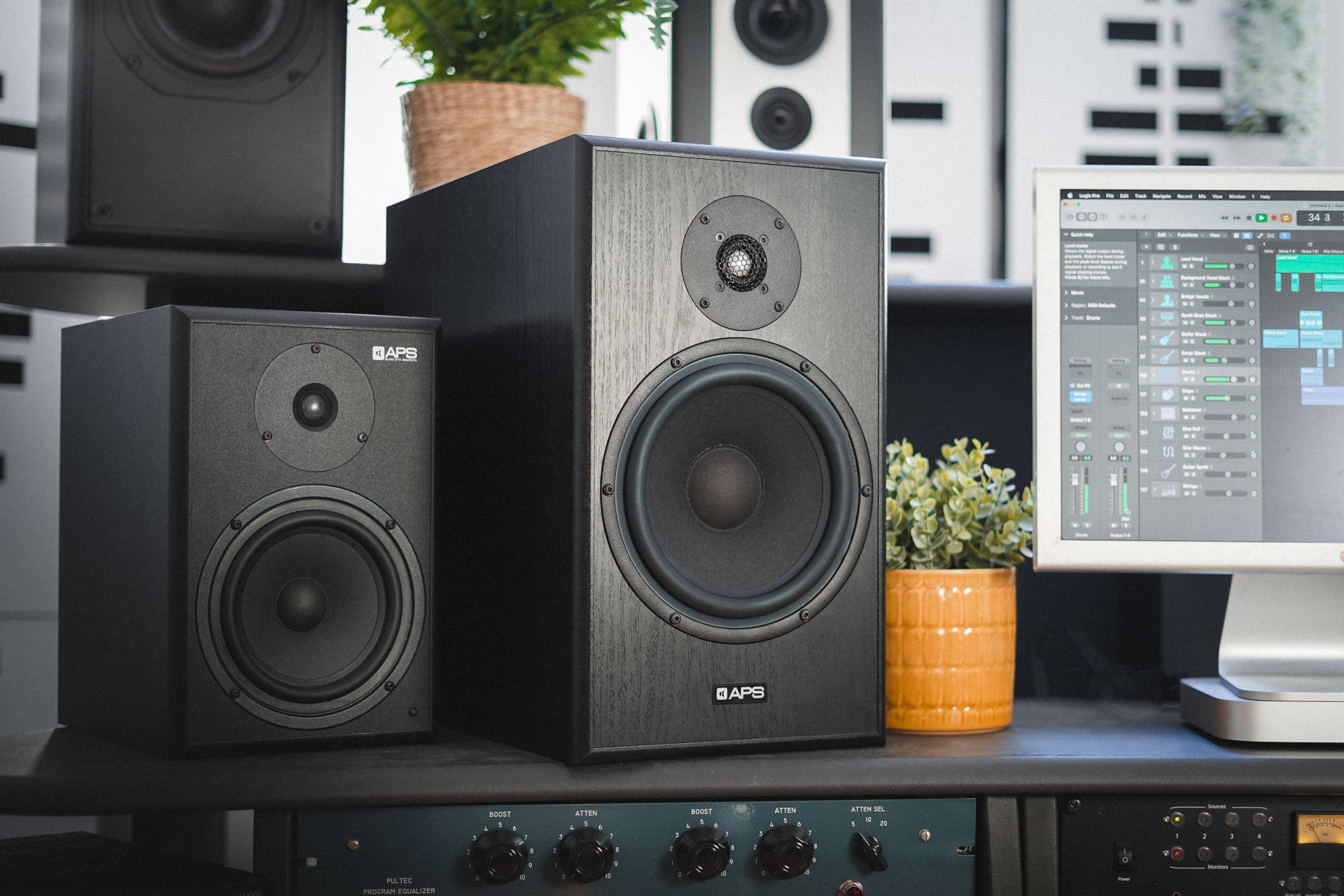
APS (Audio Pro Solutions) might not be a household name in the world of monitoring, yet for over a decade now the Polish speaker manufacturer have been making small but significant waves among the pro audio community. We’ve long since championed their products here at Funky Junk, and ever since the introduction of their widely acclaimed KLASIK monitors back in 2015 APS have built a reputation for building monitors that offer truly professional level performance at a very competitive price-point. This can in part be attributed to the fact that their design ethos focusses predominantly on sourcing and implementing high quality crossovers, amplifiers, drivers and components; stripping away any unnecessary design ‘frills’ that would only serve to increase costs and subsequently retail price. As such, APS monitor often look somewhat utilitarian in their presentation (which we personally quite like) and don’t get the attention they deserve. In an industry saturated with products that all too often fall short of their marketing hype (and advertising budgets), APS quietly and consistently deliver where it matters most: the sound.
Originally founded in 2006, APS is spearheaded by three collaborative minds: Grzegorz (“Greg”) Matusiak, Rajmund Stodolny and Kris Gorski. The goal was simple enough, set out to build the most accurate monitoring solutions in Poland, and make them accessible without compromising on quality. With a genuine passion for sound, engineering and great customer service, the founding principles which APS was built remain firmly in tact, and the company is now stronger than ever and growing fast. We sat down with APS Co-founder Rajmund Stodolny for some insight into how it all started and where it’s headed.
 – I guess we should start at the beginning… Who are APS and where did it all begin?
– I guess we should start at the beginning… Who are APS and where did it all begin?
It happened over 18 years ago now. Myself and Grzegorz GREG Matusiak used to work for TONSIL, a big Polish audio company who specialised in the manufacturing of loudspeakers and speaker drivers. Greg was responsible for designing Poland’s first ever active studio monitors and essentially is the mastermind behind the APS sound. He has papers published by both the Audio Engineering Society and European Acoustics Association, and is a globally recognized authority on loudspeaker technology with patents for both component and enclosure designs. His innovations that are at the heart of every APS product. At the time I met Greg, he already had a prototype underway for a new active studio monitor. As the ‘business guy’ I sensed an opportunity and began to market this monitor in Poland, at which point sound engineer and producer Kris Gorski – living in Paris at that time – came up to our sales department and asked about monitors for professional studio applications. That was basically how we met our future business partner. Kris is a working producer, engineer, and composer; and the owner of AudioPlanet Studios in Koleczkowo, so his industry insight and perspective is vitally important to our product development. One year later we decided to establish a new, independent company, and so APS was born!
– What makes APS monitors different from others?
I suppose it comes down to design philosophy. We all have a passion for analogue gear and its associated sound, and are fans of old school designs with a modern twist. Our studio monitors are all powered by our own proprietary Class A/B amplifiers, and you might say that the underlying acoustic principles of areas such as cabinet design are based on fundamentally traditional acoustic principles. This is then combined with a very sophisticated and modern analogue cross-over design. All electronic components are meticulously selected and measured for consistency and reliability. I think it’s this care and attention to detail that sets our monitors apart from other mass-market offerings, and I believe that this is what makes our monitors one of the best in terms of sound quality and importantly, longevity. When it comes to quality for the price, APS monitors are simply unbeatable.
– Which APS monitor would you say are your most successful and why?
Undoubtedly the Klasik 2020. The Klasik 2020 changed the game for us and put us on the proverbial map. It offers exceptional sound quality and is widely recognised as an extremely reliable tool for mixing for any genre of music thanks to its adaptable and extremely neutral response. As well as providing an enjoyable listening experience (they’re honest but not sterile), for a sub-£1000 pair of monitors I don’t believe there’s anything else on the market that offers what the KLASIK 2020 does.


Top Left – Bottom Right: • Rajmund Stodolny, CEO and APS co-founder, international sales, coffee addict. • Grzegorz “GREG” Matusiak PhD, co-founder of APS and the man who actually knows how to design a proper studio speaker. • Stanislaw “STAN” Czarnecki, screwdriver virtuoso, obsessed with quality of assembly work and a well-known model maker! • Przemek Kwiatkowski, employee of the year for many years – extremely hard-working and talented! • Richard Parus, The man with extensive experience who provides invaluable support to the APS team.
– What’s your favourite non-APS piece of audio equipment!
The AVATAR GONG! Especially the big ones (over 1 meter in diameter). Simple in design but sounds out of this world.
– Your AEON 2 collaboration with Troy Germano of The Hit Factory was very well received in the pro audio community. Any plans to do more collaborative projects like that?
Collaboration with Troy began spontaneously, so you never know, we are open to it. Our doors are open to anyone who brings inspiring ideas to the table.
– With the recent update of the APS family of monitors, could you explain the key differences between the AETHER, COAX2 and AMBIENCE, and to whom each might be best suited?
Well the Aether is a Powerful, midfield studio monitor, designed primarily for stereo and Atmos systems in mid size studios. Coax 2 is the new and improved version of original Coax, perfect as near field monitor with exceptional precision and extremely accurate imaging. It’s designed for experienced engineers. Paired with Coax Bass Extenders these can be used as full-frequency 3-way near-field monitor with a unique, sealed box design. Klasik 2020 is our best near field monitor for any type of studio. Also recommended for Atmos systems with Aethers as front monitors. Ambient is a set of small high quality monitors for Atmos systems, and in the subwoofer category the SUB10 is best for small to medium size studios whilst the SUB12 is a powerful studio subwoofer designed for medium size and bigger studios. Combined with the Aethers is makes the ultimate system (pair of Aethers and two SUB12) for big control rooms.

– Name one thing you or your team enjoy doing outside of work.
We are a bunch of weird individuals, I can’t talk about it in detail haha! Of course, we all love to listen to music (preferably recorded well) and experience live music whenever possible.
– What are your go-to reference tracks for demoing APS monitors?
We know our monitors very well, but we don’t often know our users. We leave the choice of listening to favourite tracks/songs to the listeners.
– Any other exciting new developments on the horizon?
Yes, we are in the early stages of a very exciting new design for a new type of main monitor for larger studio environments. It will be something fresh and hopefully setting new standards of sound quality in the main monitor market.
. . . . . . . . . . . . . . . . . . . . .
In summary, if you’re after after a monitor that offers superb performance and sound quality at an attractive price-point, then APS are well worth putting on your shortlist. As always, we have a selection of APS monitors available in-store to demo, including the popular KLASIK 2020 and new AETHER models, so book an appointment and pop in-store to hear them for yourself.
